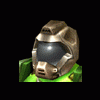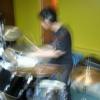I am trying to implement accurate selection tool for my level editor that would be able to use both isometric tiles and isometric hexagons. with the same sprite dimensions. I am now focusing on getting regular isometric tile to work properly.
Below is the color coded isometric tile that i will be using (it will be transparent with only lines visible, this one is for explanation only). I want my program to register specific tile if the cursor is only in green area.
The sprite has dimensions of 192x96. How do I calculate if the mouse is only in green area? Since from what I find everything is based on rectangle logic, because I check X, and Y coordinates of the mouse.
From here I have something like
if(mouse.x > 0 && mouse.y < 48)
if(mouse.x < 96 && mouse.y < 48)
select tile
but these coordinates also catch stuff from red triangle area in top left.











